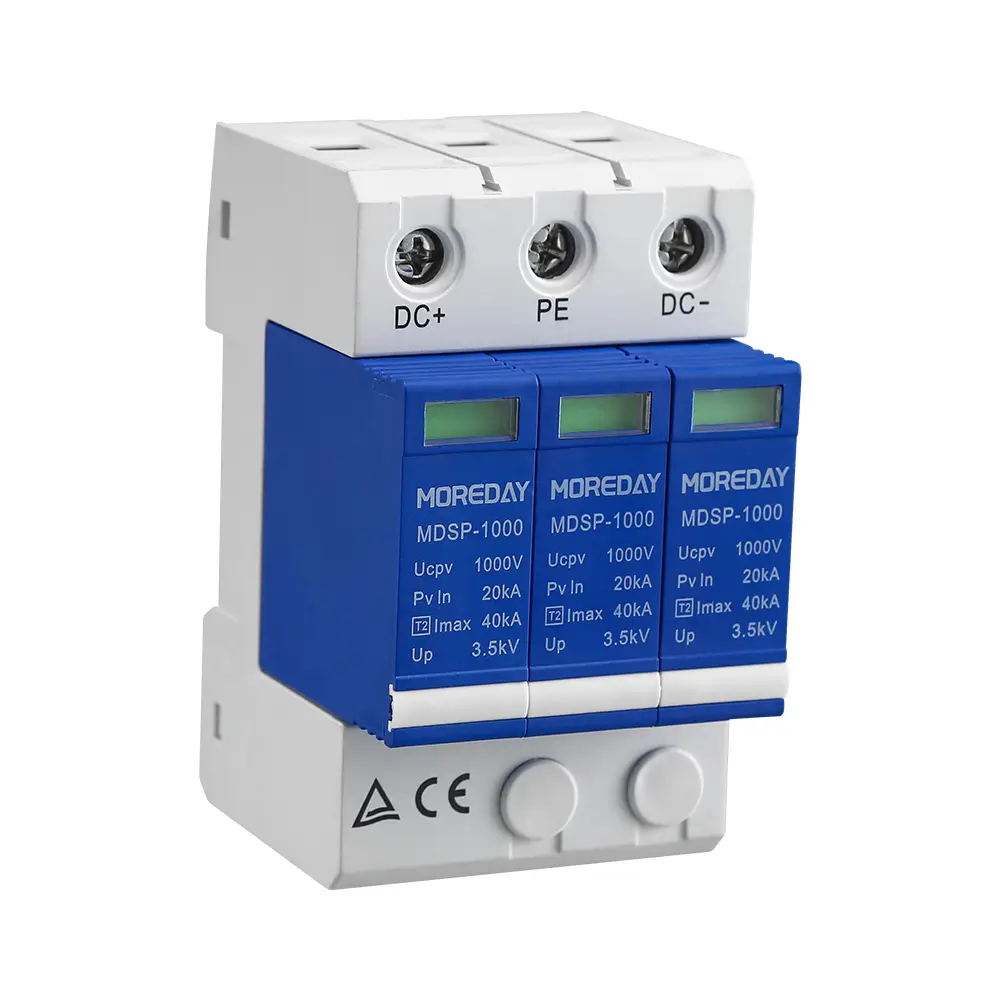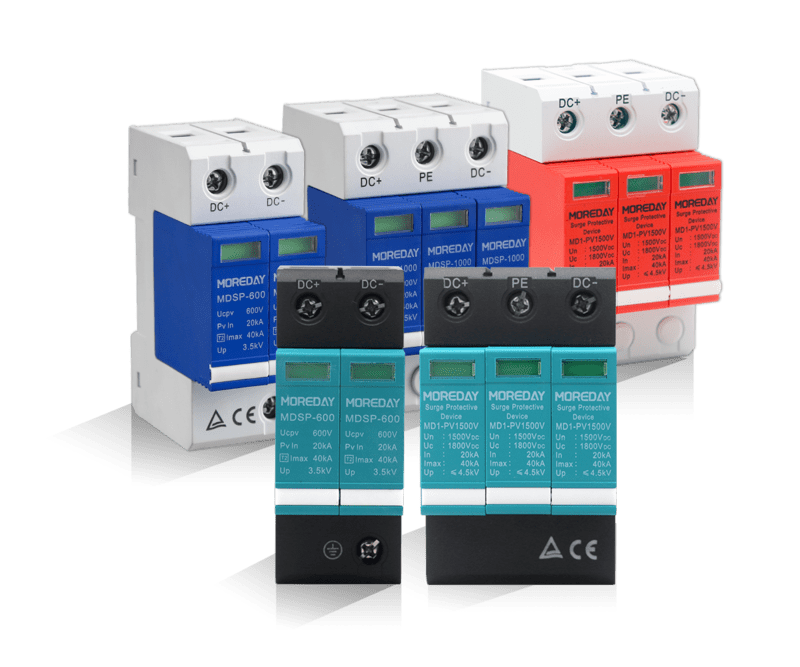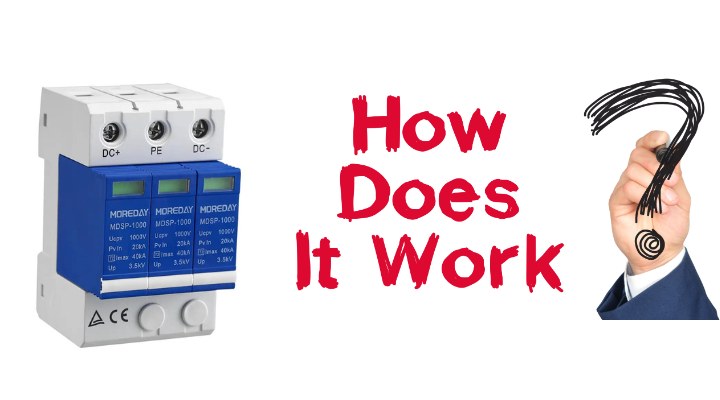A surge protector is a brief but extreme rise in voltage in an electrical system, often caused by lightning strikes, grid faults, or the switching of large appliances.
A surge can increase the voltage to several times normal levels in a matter of milliseconds or microseconds, which can cause damage or reduce the life of an electronic device. In this article, we will take a look at how surges work and why we use them in our daily lives!
Table of Contents
ToggleWhat is a surge protector?

A surge protector is an electrical device that primarily protects electronic equipment from voltage spikes. It regulates the voltage supplied to the device by blocking or grounding any voltages that exceed a safe threshold, thus preventing damage and extending the lifespan of the equipment.
Why do you need surge protection?
Why use a surge protector? Here are some points to help you understand its importance:
Protect Electronic Devices
Power surges, especially voltage spikes, can quickly damage sensitive electronic devices such as computers, TVs, and other household appliances. Surge protectors effectively prevent excessive voltage from reaching these devices, thus avoiding damage.
Prevent Data Loss
Surge protectors can prevent the loss of important data stored on computers and servers.
Save Costs
Surge protectors can help save on potential repair or replacement costs. Compared to the high cost of replacing damaged equipment, purchasing a surge protector is a small investment.
Increase Safety
Voltage spikes can not only damage equipment, but also increase the risk of fire due to overheating or sparks caused by power surges. Surge protectors help reduce this risk and ensure a safer environment.
Prolong Equipment Lifespan
Recurring small power surges can also gradually reduce the performance and lifespan of electrical equipment. Surge protectors help extend the lifespan of equipment by ensuring that equipment operates under stable voltage conditions.
As can be seen, configuring a surge protector is a wise safety measure to protect investment and safety.
How does a surge protector work?
Surge protectors monitor electrical circuit voltage and divert excess to the ground to prevent device damage. These devices mainly use metal oxide varistors (MOVs), which adjust their resistance to control voltage levels.
If the voltage exceeds a safe threshold, MOVs quickly reduce resistance, channeling the excess to the ground. This quick action protects electronic devices from voltage spikes. The effectiveness of a surge protector is measured by its response time, clamping voltage, and maximum energy absorption capacity.
What should I plug into a surge protector?
Plugging sensitive electronic devices into a surge protector can protect them from potential voltage spikes that could cause damage or data loss. Here are some common devices that benefit from surge protection:
Computer Equipment
- Desktop and laptop computers
- Monitors
- External hard drives and SSDs
- Printers and scanners
Entertainment Systems
- Televisions
- Gaming consoles (such as PlayStation, and Xbox)
- Audio equipment and home theater systems
- DVD and Blu-ray players
Home Appliances
- Microwaves
- Refrigerators
- Washing machines and dryers
- Coffee makers and other kitchen appliances
Office Equipment
- Fax machines
- Copiers
- Office phone systems and VoIP devices
Networking Devices
- Routers and modems
- Network switches and wireless access points
Chargers for Mobile Devices
- Chargers for smartphones and tablets
- Chargers for smartwatches and fitness trackers
Tips for choosing a surge protector

Now you have a certain understanding of the working principle and definition of surge protectors. Surge protectors are also divided into many types, including type 1 and type 2 surge protectors, so when buying a surge protector, you should not only consider its type but also the following aspects:
Joule rating
The higher the joule rating, the better the protection. Look for a protector with at least 600 joules for basic protection; however, for more sensitive devices, it is recommended to use a protector rated at 1000 joules or higher.
Response time
Surge protectors should respond quickly to surges. Ideally, the response time should be less than 1 nanosecond to effectively protect your devices from fast voltage spikes.
Number of outlets
Consider how many devices need to be connected. Make sure the surge protector has enough outlets to accommodate all devices without overcrowding.
UL certification
Check whether the surge protector is certified by Underwriters Laboratories (UL). Specifically, look for labels that say “UL certified” and “1449,” which refer to the UL standard for surge protection devices.
Clamping voltage
This is the voltage at which the surge protector begins to limit surges. Lower clamping voltages generally provide better protection. Look for devices with clamping voltages of about 400 volts or less.
Cord length
Choose a surge protector with a cord that is long enough to reach your device, yet short enough to avoid creating a tripping hazard or unnecessary clutter.
Indicator light
A surge protector with an indicator light provides visual confirmation that the device is actively providing protection.
By carefully considering these factors, you can select a surge protector that meets your specific needs and provides reliable surge protection.
Conclusion
In summary, a surge protector works by constantly monitoring the current flowing through it and taking quick action when it detects a voltage that exceeds a preset safety threshold. The main component inside a surge protector is a metal oxide varistor (MOV), which responds by clamping the overvoltage and transferring it safely to the ground.
Ask the experts for help
Want to buy safe surge protection? Call Moreday’s surge protectors today and get a quote. We also carry a wide variety of electrical equipment to help you choose the right product for your application!


